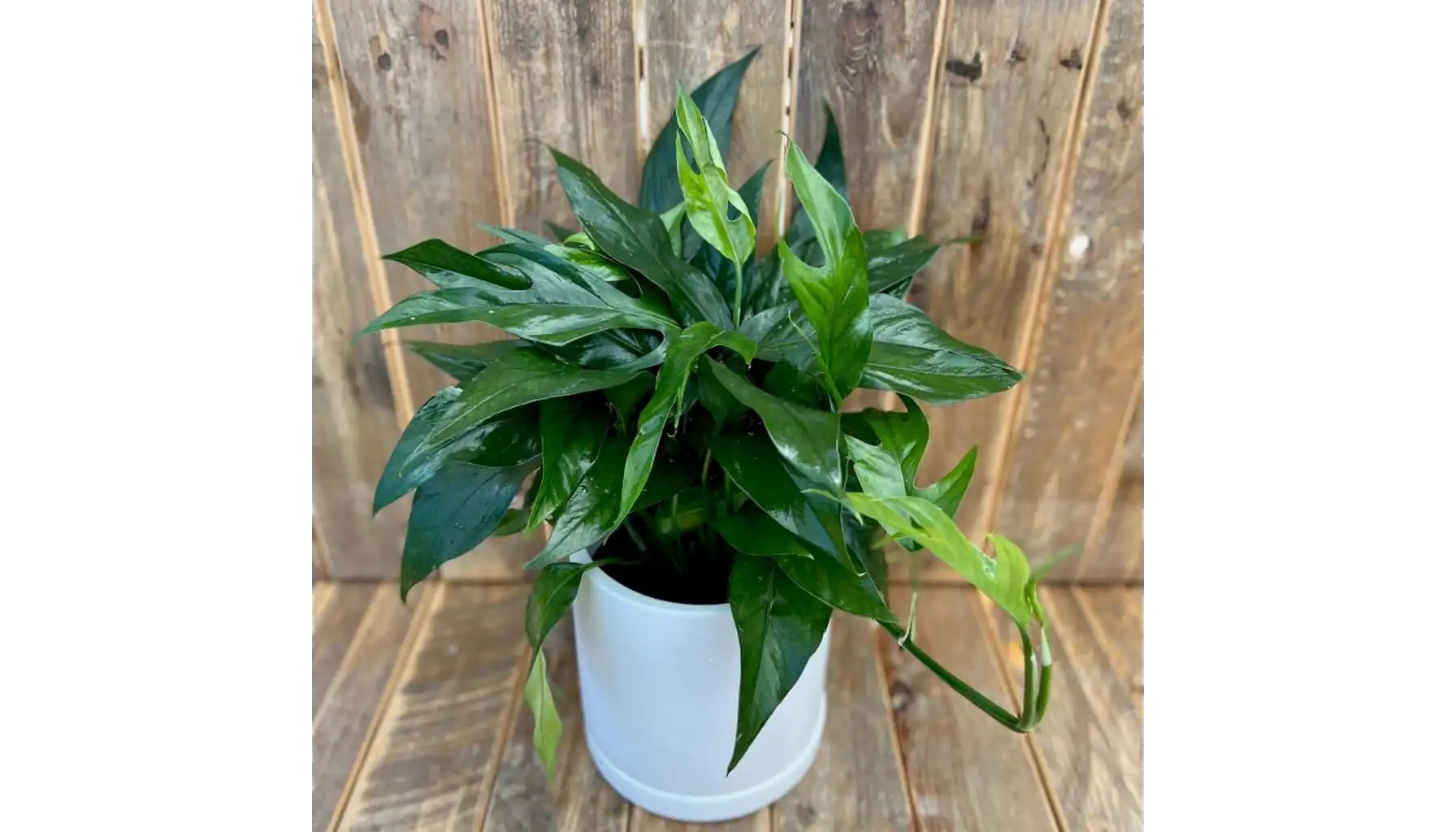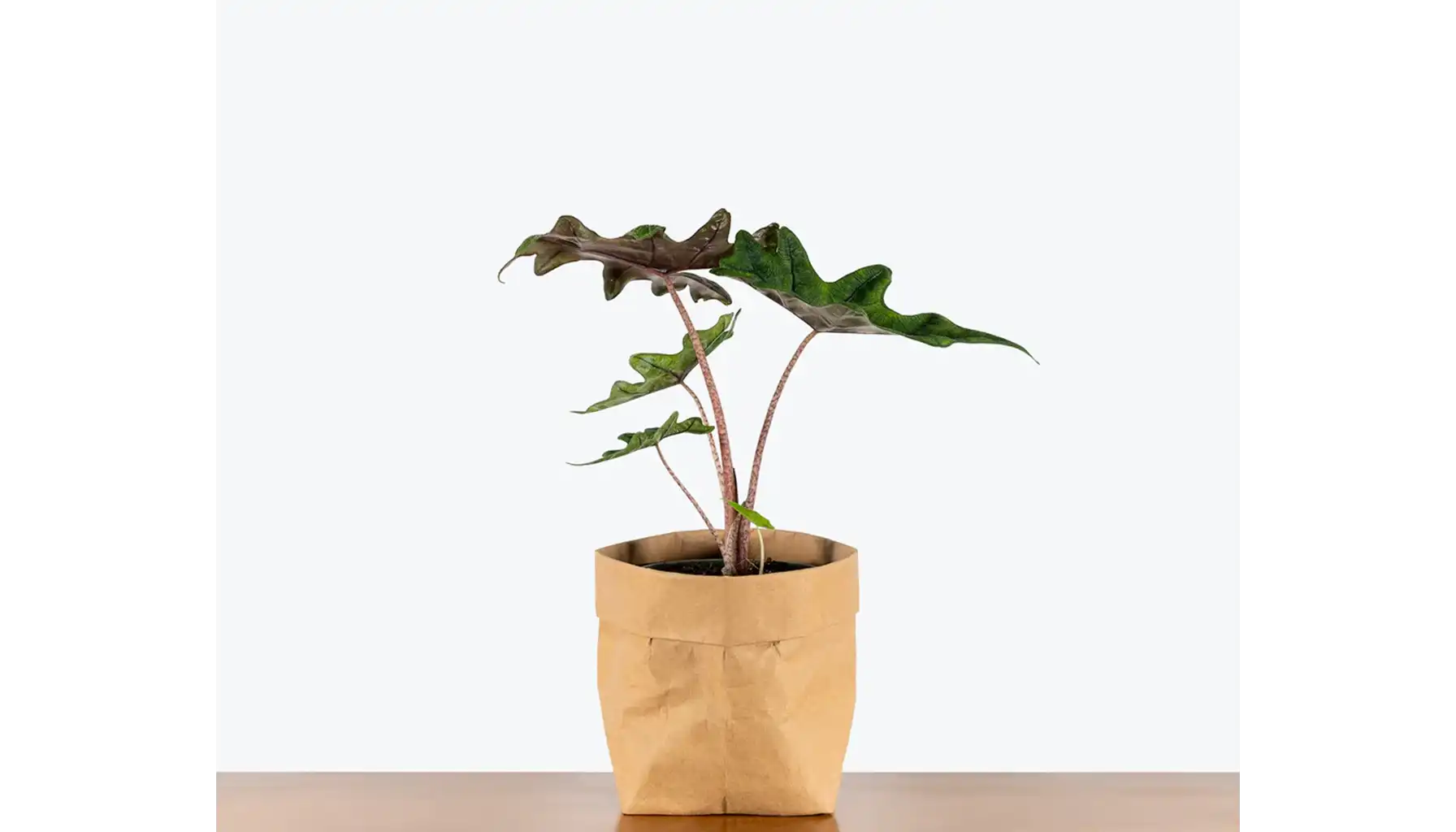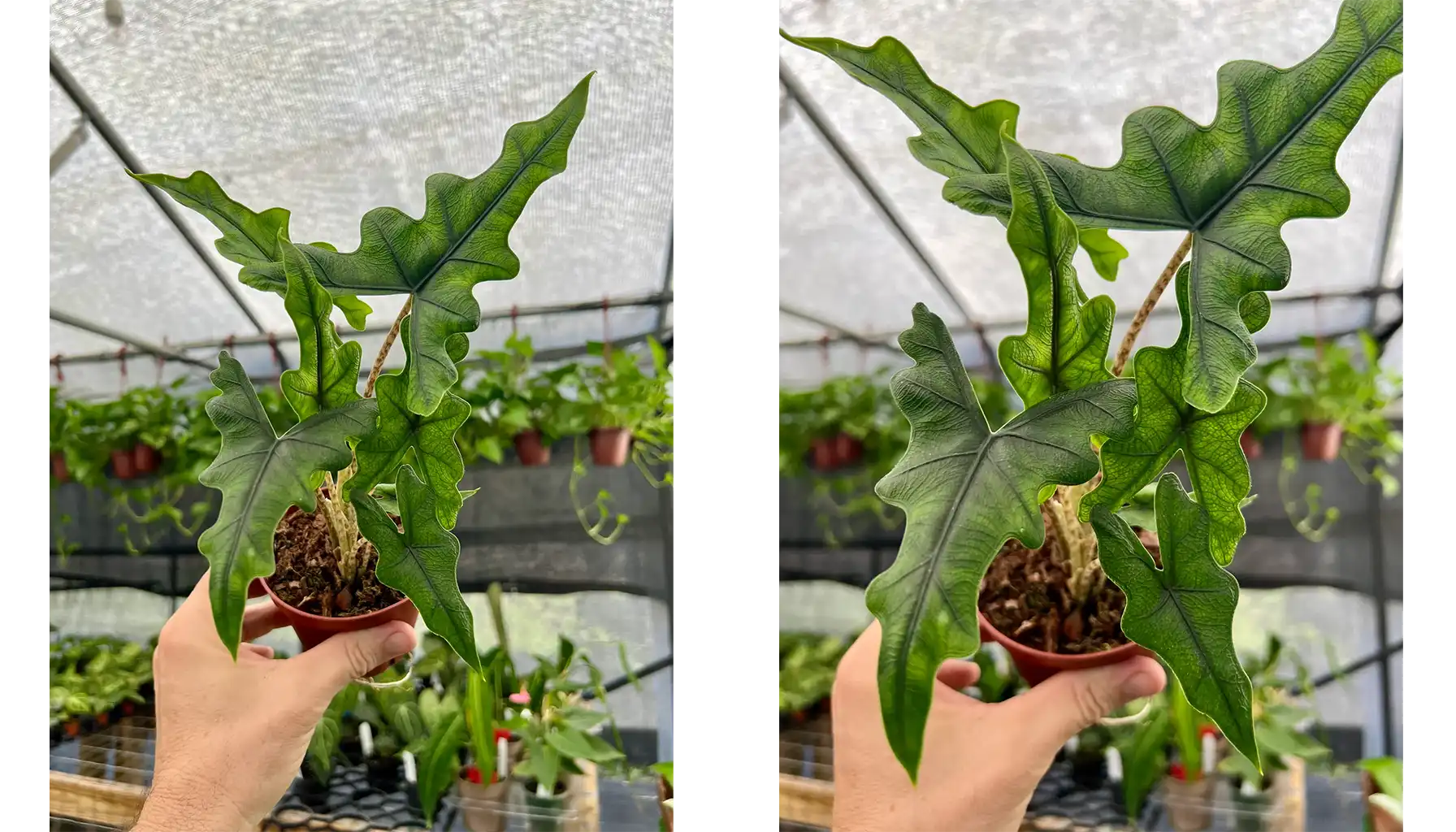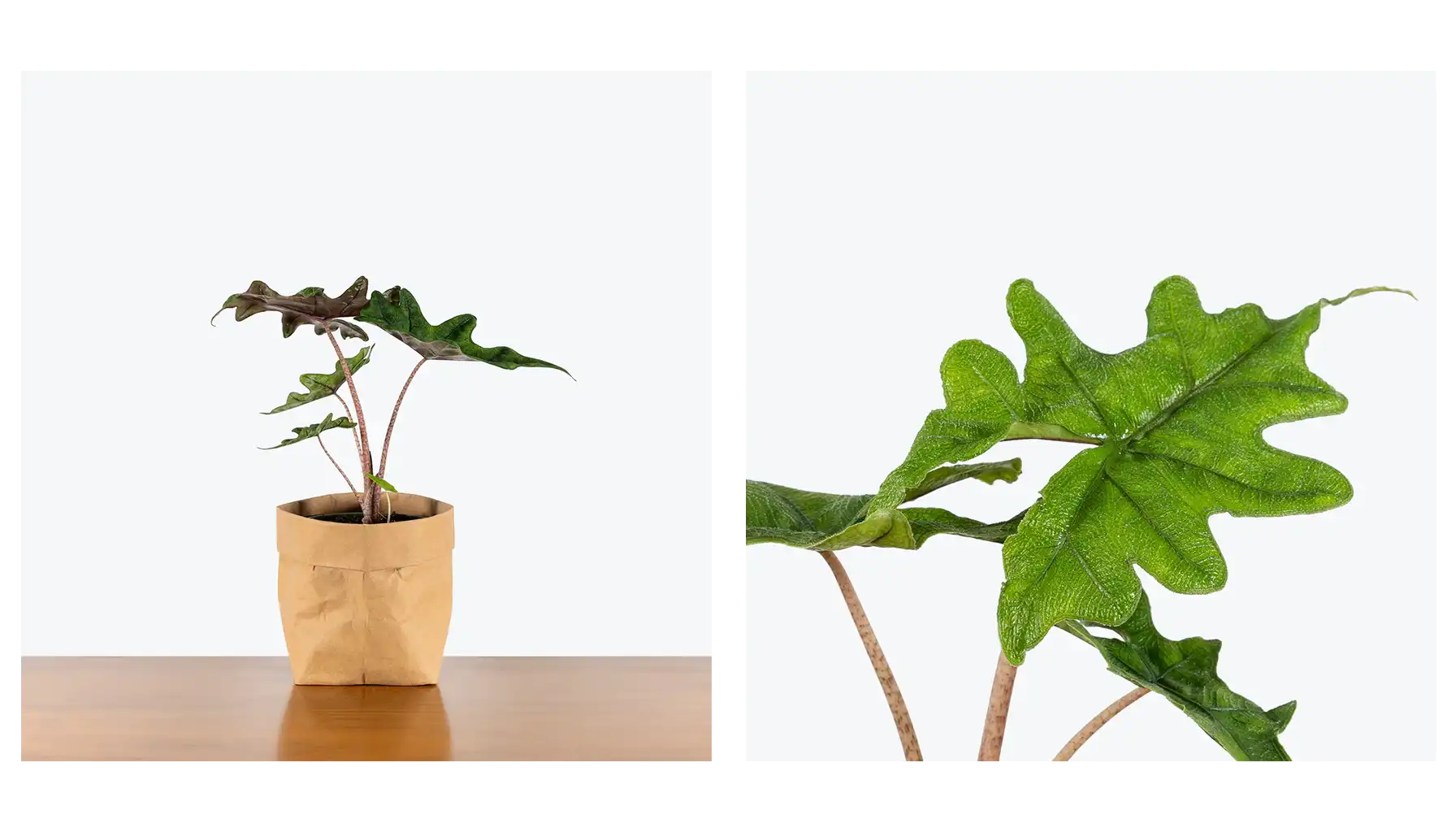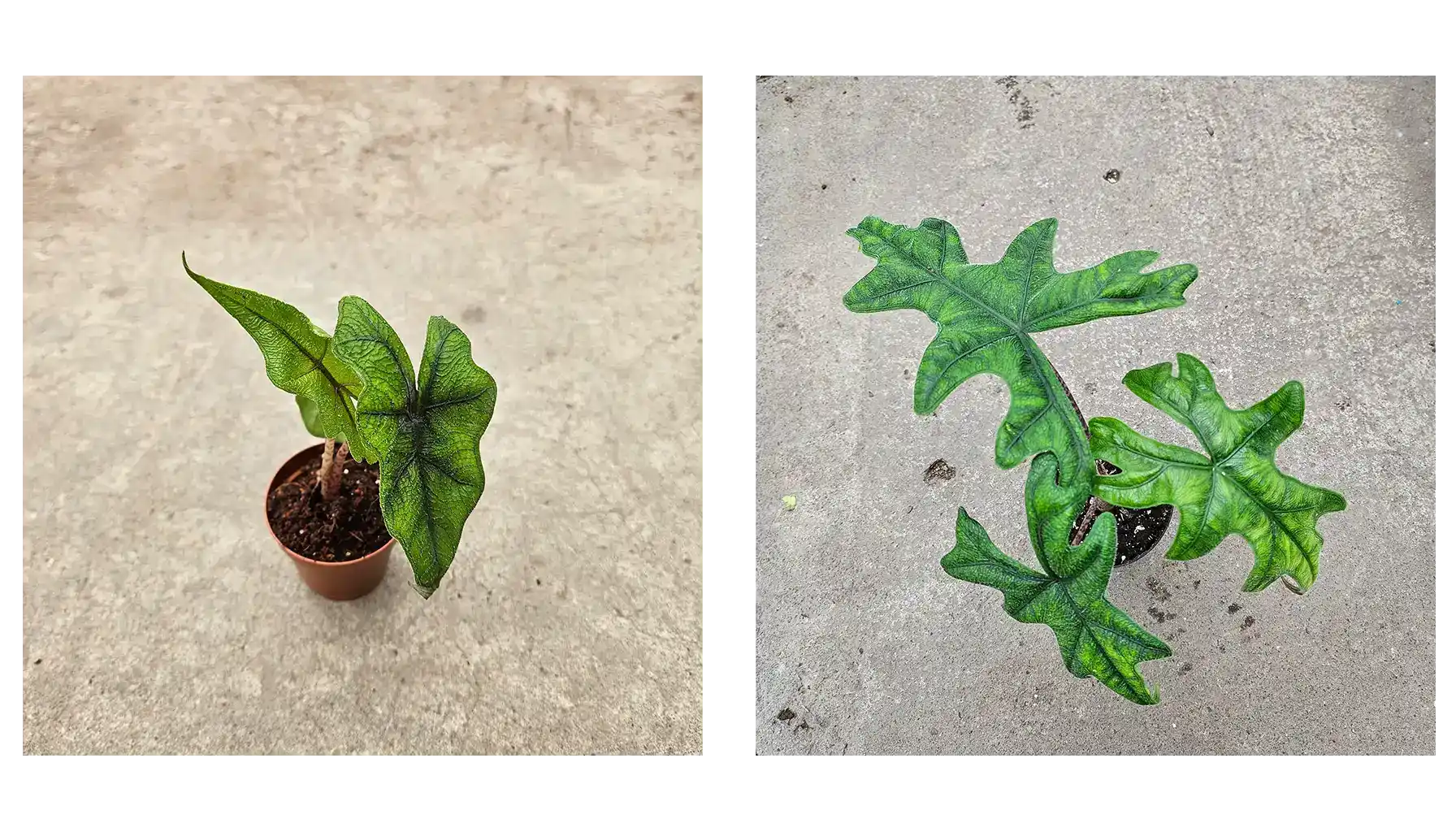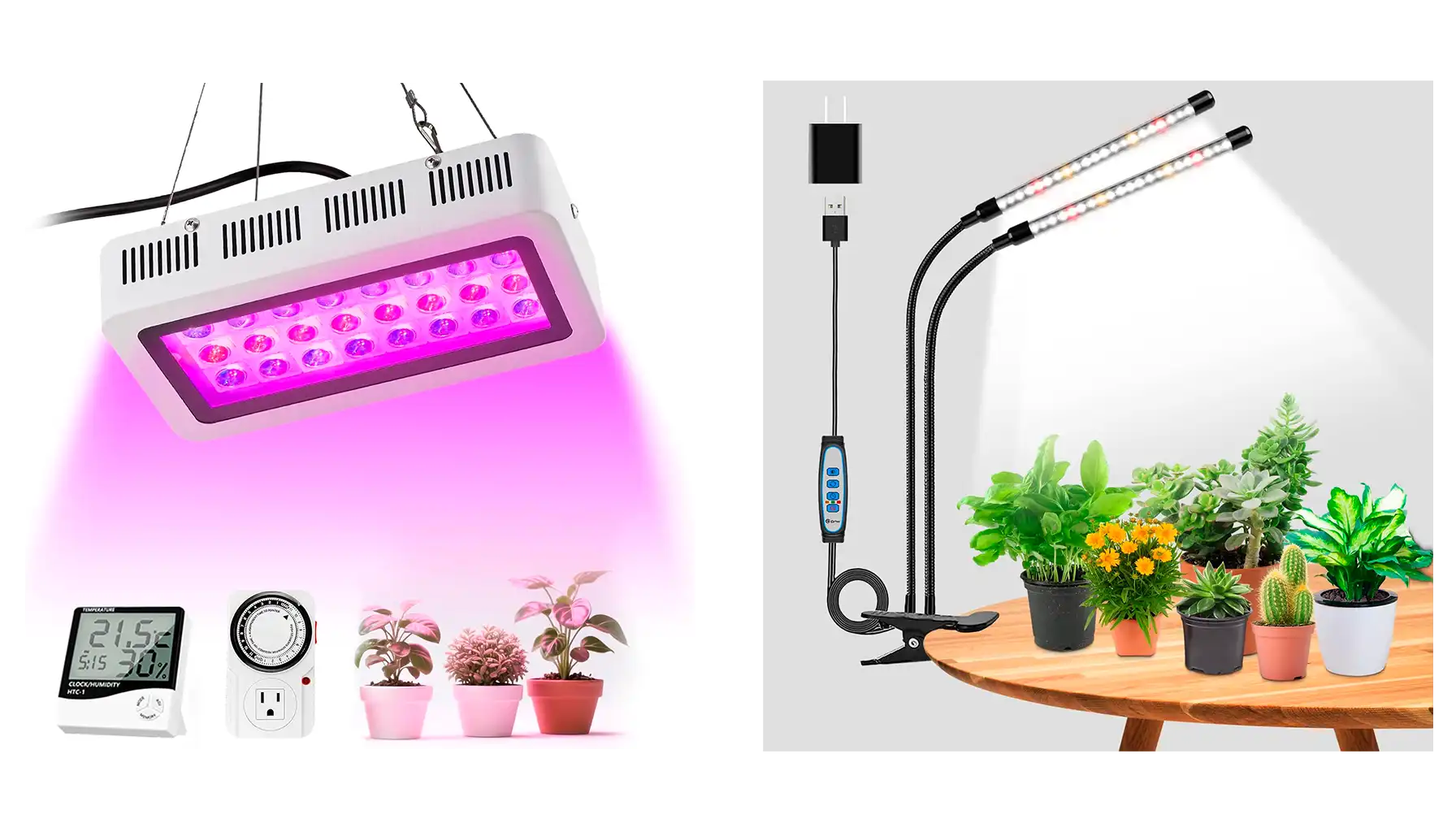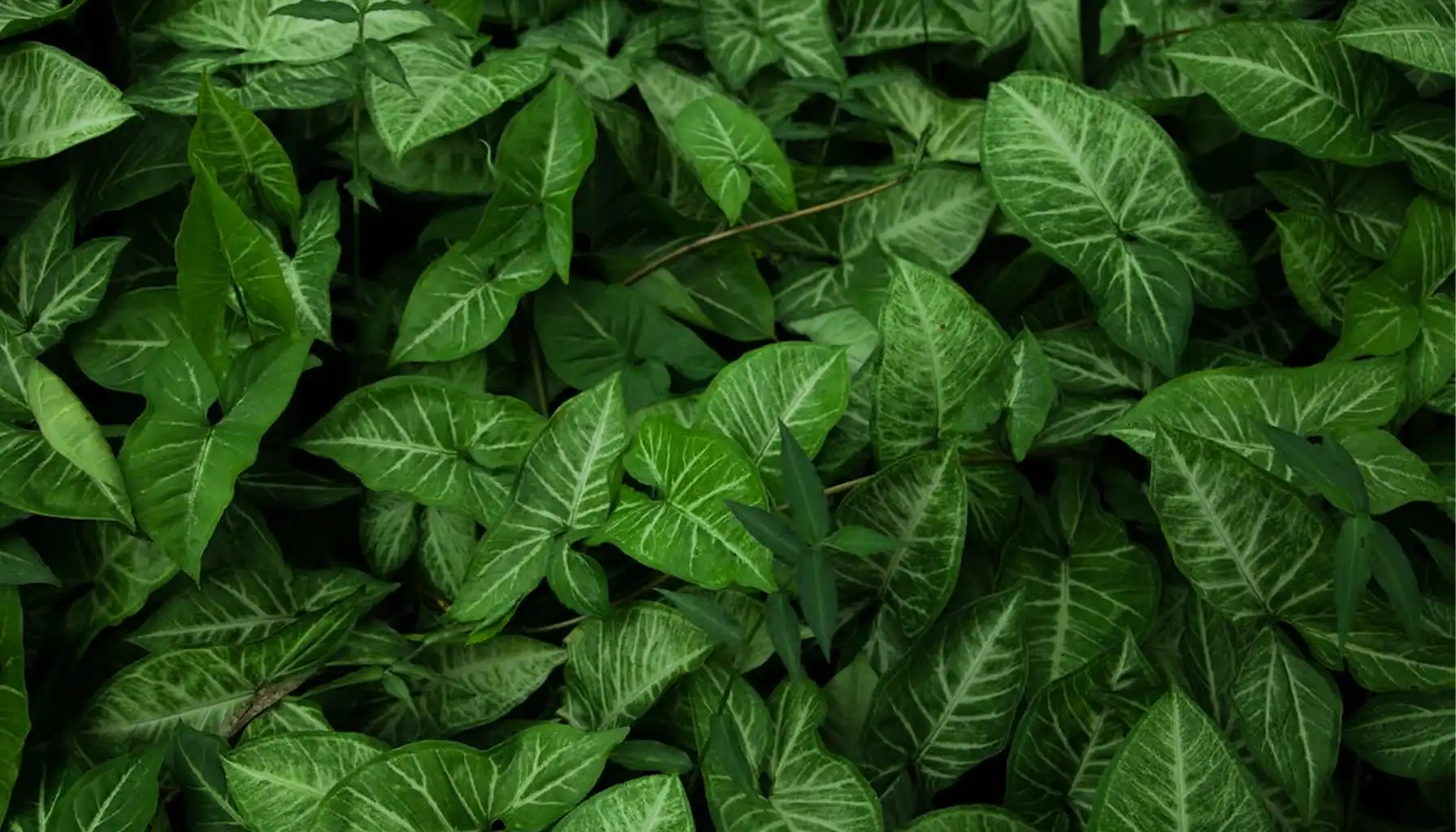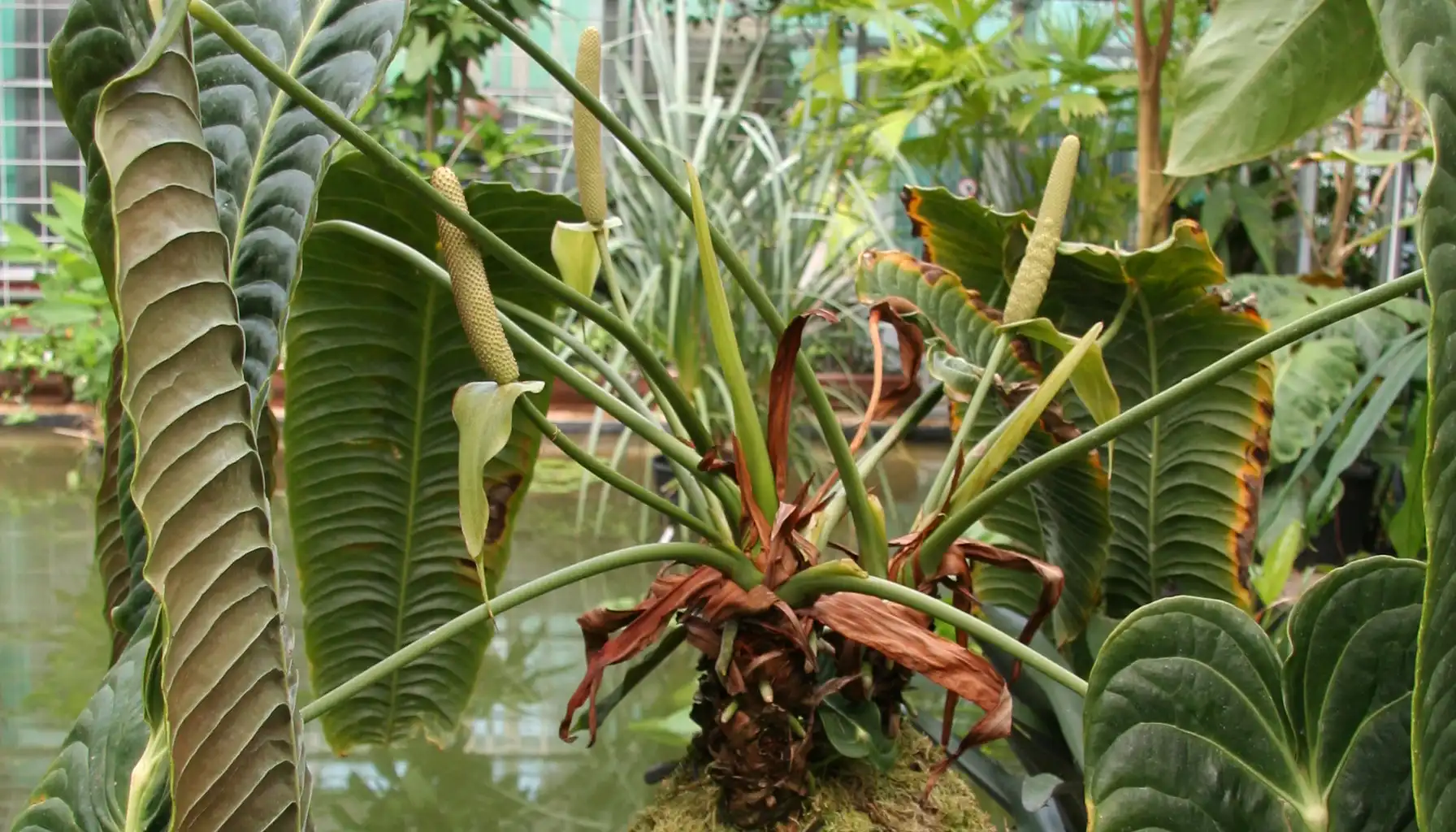Jacqueline Alocasia is an attractive houseplant with lobed leaves shaped like a deer's head, featuring thin dark lines and a fuzzy texture. The Alocasia jacklyn variegated version, with its bright green and cream patterns, is an indispensable element for gardeners.
Curious about your new tropical treasure? Use a plant identifier to confirm it’s an Alocasia jacklyn and snag custom care tips.
What Makes Alocasia Jacklyn Unique?
Origins and Distinctive Features
Native to Indonesia, the Alocasia sulawesi jacklyn (or Alocasia Tandurusa jacklyn) is a recent find in the Araceae family. Its vivid green leaves, accented with dark veins and a velvety feel, stand out alongside plants like Cactus.
Creamy petioles with purple streaks add to the side-view charm that the top-down varieties lack. It’s evergreen in ideal conditions and stays lush year-round due to the lack of winter dormancy. Place the plant in a location that is inaccessible to pets and children, as it is toxic to them. It may poison anyone who eats any part of it, so keep it away from children and animals.
Why Grow This Plant?
The Alocasia jacklyn plant purifies air, filtering indoor pollutants for a fresher space. Its bold look rivals a Hoya, turning any room into a tropical escape. Young plants shine on desks, while Alocasia jacklyn full grown specimens, reaching 5-8 feet tall and 4 feet wide, make striking floor displays.
Exploring Alocasia Jacklyn Varieties
Classic and Variegated Jacklyn Alocasia
The standard jacklyn Alocasia care yields deep green leaves with subtle veins, while the variegated Alocasia jacklyn flaunts creamy splashes. The Alocasia jacklyn price for variegated types reflects their scarcity and attracts those who are looking for unique textures.
The rare forms like Alocasia jacklyn aurea bring golden hues, and the Alocasia jacklyn mystic offers darker, moody tones. These pair beautifully with colorful plants like Croton, creating vibrant vignettes.
Core Alocasia Jacklyn Plant Care Tips
Basic Alocasia Jacklyn Care Needs
Growing happiness requires warmth (65-85°F), high humidity, and a well-draining mix.
Place it in medium to bright indirect light to prevent scorched leaves.
Protect the roots by keeping the soil moist, but never soggy.
Consider boosting humidity with a humidifier or a pebble tray.
Alocasia Jacklyn Variegated Specifics
Variegated plants need extra light to maintain the film-like creamy pattern on them; fading or reversion to solid green can occur otherwise. Place such plants near an east-facing window with a splash of morning light, or under a south-facing window, about 3 or 4 feet away, with sheer curtains.
Rotate every two weeks to ensure even exposure, preventing lopsided growth. If patterns dull, gradually increase light over a week to avoid shock, but avoid direct sun, which burns delicate leaves.
Variegated types may grow slightly slower due to less chlorophyll, so be patient and maintain consistent Alocasia jacklyn care routines. Monitor for stress signs like yellowing edges, which can indicate light or humidity imbalances.
Alocasia Jacklyn Soil and Feeding
Soil Mix:
Mix 1 part of high-quality potting soil with 5 parts perlite, vermiculite, orchid bark, or coco peat.
Aiming at the mixture being acidic (pH 5.5-6.5) and chunky will ensure roots with enough aeration. It also promotes quick water drainage so the roots won't stand in water for long.
Benefit: Suitable for precise root health that reduces root rot or in prosperous growth possibilities of good resale value.
Fertilization:
Feeding should take place monthly during spring and summer, and a half-strength fertilizer is best, preferably organic: the balanced one, such as 10-10-10, or one specially designed for aroids.
Feeding is stopped during fall and winter to respect dormancy and avoid nutrient burn.
Benefit: Increases foliage vibrancy and growth rate.
Repotting:
Repot every 2-3 years into a pot 1-2 inches larger in diameter to maintain steady growth.
Alternatively, consider a slightly smaller pot with adequate drainage holes to avoid overwatering.
At the time of repotting, check for soft or blackened roots and trim them; if the soil feels collapsed or tired, refresh it as well.
Benefit: Prevent root-bound stress, maintain the plant's growth, and promote a longer life.
Watering and Alocasia Jacklyn Humidity
Watering Practices
Water when the top 2 inches of alocasia jacklyn soil are dry, letting the excess water drain out of the pot. Seasonal adjustments need to be made to watering—more in summer and less during winter.
Too much water may lead to root rot, so make sure your pot has drainage holes.
A moisture meter can give you a precise reading if you are in doubt.
Bottom watering reduces the chance of fungal issues on the leaves.
Maintaining High Humidity
Aim for 60%+ humidity to mimic its tropical roots. Place in a humid room or run a humidifier.
Low humidity causes crispy edges; group plants to trap moisture.
Mist lightly in dry conditions, avoiding leaf saturation.
Terrariums or display cases enhance humidity for smaller specimens.
Growth and Size Expectations
Reaching Alocasia Jacklyn Mature Size
Young plants grow slowly but develop lush foliage over time. An Alocasia jacklyn mature plant produces offsets, adding fullness and creating a bushier appearance.
Then keep these plants in a well-lit and humid place, since a drop in either may retard their growth. Feeding during the growing period promotes the development of larger leaves and stronger stems. If the leaves are cut off, the plant will have more energy to develop new leaves.
Alocasia Jacklyn Size and Growth
An Alocasia jacklyn big or Alocasia jacklyn large reaches 5-8 feet tall and 4 feet wide, making it ideal for floor displays in spacious rooms. Its Alocasia jacklyn mature size commands attention, especially when paired with smaller plants for contrast.
Slightly snug pots will restrain root expansion to limit size indoors, keeping the plant small for smaller spaces. Outdoors, in warm climates, it may grow taller with plenty of space and nutrients around.
Natural Habitat Insights
In Indonesia, the Alocasia jacklyn sulawesi thrives under shaded canopies in rich, well-drained soil, inspiring indoor setups with filtered light. Avoid sudden temperature changes and provide good air circulation to prevent fungal problems. Outdoors, choose a cool site where the sun is dappled to simulate the experience of a rainforest.
Flowering and Propagation
The Alocasia Jacklyn Flower
Being rare, indoor blooms appear as green spikes. Prune for leaf growth.
Propagating with Alocasia Jacklyn Corms
Divide rhizomes or grow Alocasia jacklyn corm for new plants in spring or summer.
Division: Cut sections of the rhizome with roots and stems and pot in a moist mix.
Corms: Place the bases in water, cover for humidity, and plant once 2-3 inch roots have formed.
Rooting will take 1-2 months; when new leaves appear, propagation is successful.
Seed propagation is uncommon and takes years to result in flowering.
Troubleshooting Common Issues
Addressing Alocasia Jacklyn Yellowing
Alocasia jacklyn leaves turning yellow often signal over- or under-watering. Check soil and ensure drainage.
Yellowing can hint at pests; be sure to check for spider mites or scale.
Cut off the infected leaves using sterilized shears.
If standing water in the pot causes the leaves to yellow, consider repotting in fresh mix.
Fixing Drooping Leaves
Drooping stems from low fertilizer, light, or water imbalances. Adjust care slowly to revive.
Temperature falling below 60°F stresses the plant; keep it warm.
With recent repotting, there may be a period of shock, so consider extra humidity.
If the plant starts to droop from lack of nutrients, go ahead and resume feeding it, provided that the dormant period has come to an end.
Pests and Diseases
Watch for mealybugs, scale, or spider mites. Dab with alcohol-soaked cotton or apply neem oil.
Regular inspections prevent infestations.
Isolate affected plants to protect others.
Fungal diseases from high humidity without airflow; use fans for circulation.
The Alocasia Jacklyn Controversy
This plant often attracts gardeners with its bright foliage, unusual pattern, and expressive veins, as it is considered a mutation or hybrid of Alocasia portei.
With perpetual debates in taxonomy, it's no wonder that the very nature of its rarity and stellar aesthetics makes it a valuable acquisition for any tropical plant enthusiast. Caring for it, however, demands special conditions of high humidity, bright diffused light, and well-draining soil, which makes it a challenge to grow.
Advanced Care for Thriving Plants
Optimizing Alocasia Jacklyn Light Requirements
Place near east or north-facing windows for soft light. Artificial lights work if they cast medium shadows.
Rotate biweekly for balanced growth.
Avoid direct sun to prevent leaf burn.
Filtered sunlight through sheer curtains mimics natural habitat.
Outdoor and Indoor Tips
Indoors, experiment with spots to balance light and humidity. Outdoors in warm zones, choose shaded, well-drained areas.
Monitor for roots crowding drainage holes to signal repotting.
Bring indoors before temperatures hit 60°F.
Wipe leaves gently to remove dust, aiding photosynthesis.
Conclusion
With its vividly colored leaves streaked with varied patterns, Alocasia Jacklyn practically paints any space in tropical shades—from the common Sulawesi to the rarely found Mystic and Aurea.
Grow this beauty by offering bright, indirect light, keeping the medium moist, and maintaining high humidity.
Propagation through corms or by dividing the rhizomes allows you to grow even more of these lovely plants. Pay close attention to any early yellowing and adjust care accordingly. Revel in its intricacies or fuel your passion with a plant ID app.
Related AI Plant Finder Posts
